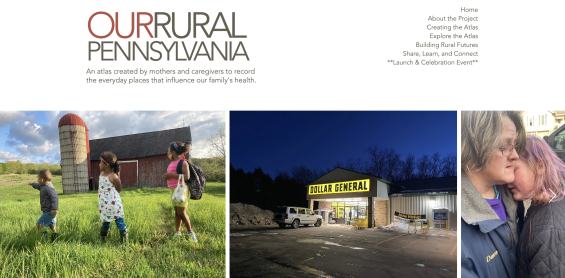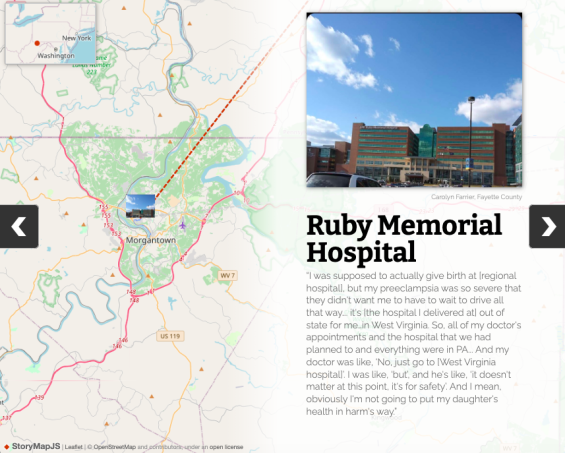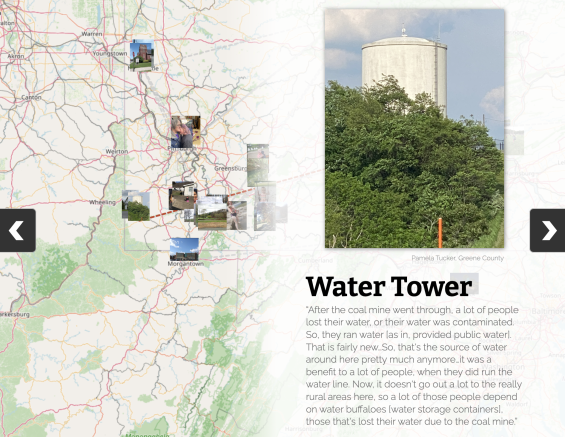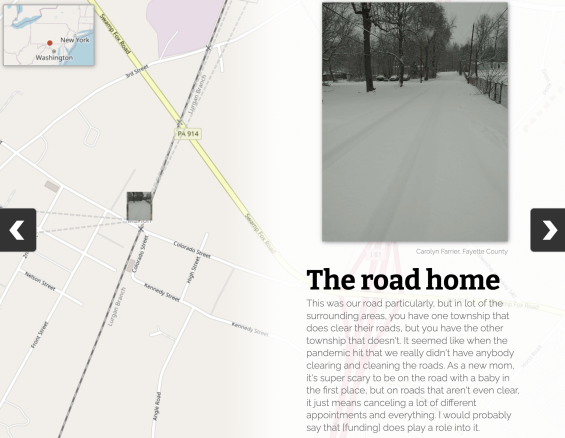Debuting Our Rural Pennsylvania: An Interactive Atlas of the Places That Influence Maternal & Child Health
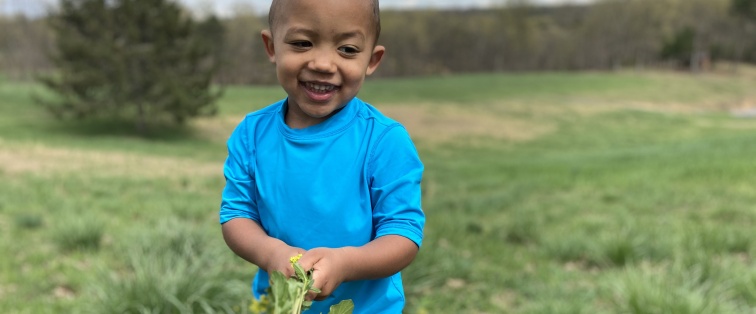
During this year’s National Rural Health Week, I’m so excited to debut Our Rural Pennsylvania, an online interactive atlas created by mothers and caregivers to record the everyday places that influence their family’s health. Nearly three years in the making, Our Rural Pennsylvania is the culmination of a research project, “Understanding the Role of Place in Health and Well-being for Families – A Photovoice Project by Moms.” This interdisciplinary project sought to identify rural-relevant policies and investments, particularly outside health care systems, that would improve maternal and child health in rural communities. Below, I’ll share more about why we focused on rural communities, our unique research approach, and how this tool can be used to inform investments to support children and families.
A focus on caregivers living in rural communities
Research shows that infants born in rural areas, rather than cities or suburbs, are less likely to celebrate their first birthday. Similarly, mothers and birthing parents in rural communities are less likely to have supportive, community-based care, and experience maternal mortality and morbidity at rates 60% higher than those living in cities. This inequity isn’t rooted in individual risk behaviors or local health care systems alone, but also in broad community socioeconomic disadvantage. Improving maternal and child health outcomes in rural places requires widespread structural investments in the rural communities that support families. Yet, decision-making about how to invest in rural communities is often missing the perspective of those most affected by investments: mothers and children.
Our Rural Pennsylvania creates a space for sharing those missing stories. The project offers a small glimpse into how mothers who are most affected by social, political, and ecological forces perceive these structures to influence their health, and their children’s health. Mothers and grandmothers living in rural Pennsylvania share the places that support or hinder their family’s health, and how they want to see local investments used. Their experiences are central to re-imagining how governments and institutions could better support the health of rural families.
Capturing caregiver perspectives through their words and photos
To ensure these perspectives and experiences were accurately represented, Our Rural Pennsylvania was built using data collected through a photovoice process. Photovoice is a research method by which researchers partner with participants who take photos and share stories about the photos in a way that reveals their own perspective or experience about a certain topic. Rather than a researcher taking photos themselves, community members select the subject of photos and share their own story about the photo’s content. For example: Why is this place important to me? What happened here? What does this place mean to me? How does this place affect my health? Photovoice re-centers who tells the story and how it is told. It connects diverse experiences and sparks new dialogue about how rural communities support families.
This project uses photovoice because we believe that mothers and birthing parents are the experts in their own lives. They know better than anybody what is affecting their health and their children’s health. They possess in-depth knowledge about how social environments, ecology and place impacts their family’s health. But too often, the experiences of mothers living in rural areas or those with low resources are stereotyped by those outside their community who have more power and influence. Even inside small and tight-knit communities, the way that individuals experience a place is unique to them. Mothers, caregivers and children have an especially unique perspective that isn’t always visible, even to others in the same community.
Informing investments in rural Pennsylvania to support children and families
These experiences come together to form a collective narrative of where and what we should invest in to support rural families. What did we hear from participants? Mothers and caregivers want to see government and institutional investment in infrastructure and transportation, broadband communications and postal services, safe and affordable housing, health care, early childhood education and child care, parks and recreation areas, and public community space.
They name these supports because they see these services as a critical connection to protecting their family’s health: broadband to access telehealth appointments for mental health or substance use care; transportation options to attend doctors’ appointments; housing with safe water sources; local affordable child care options for working parents; weatherized roads and bridges for safe transit; and protected open space, working landscapes, and parks where children can develop a love of the outdoors and the values important to their families.
During National Rural Health Week, as attention is focused on the vital health care needs of rural communities, I hope this atlas reminds us of the broad and wide-ranging social determinants that affect families’ health. Protecting the health of mothers, caregivers, and families in rural communities means investing in the physical and social infrastructure of rural places.
Want to learn more about this project? Join the project leads virtually on Nov. 17 at 5:30 p.m. ET in celebrating the launch of Our Rural Pennsylvania. The event will debut the atlas, feature participants who shared their stories, and present ways in which the atlas can be a resource for advocating for investing in healthy rural communities.
This research was funded through Robert Wood Johnson’s Health Policy Research Scholars training fellowship.
